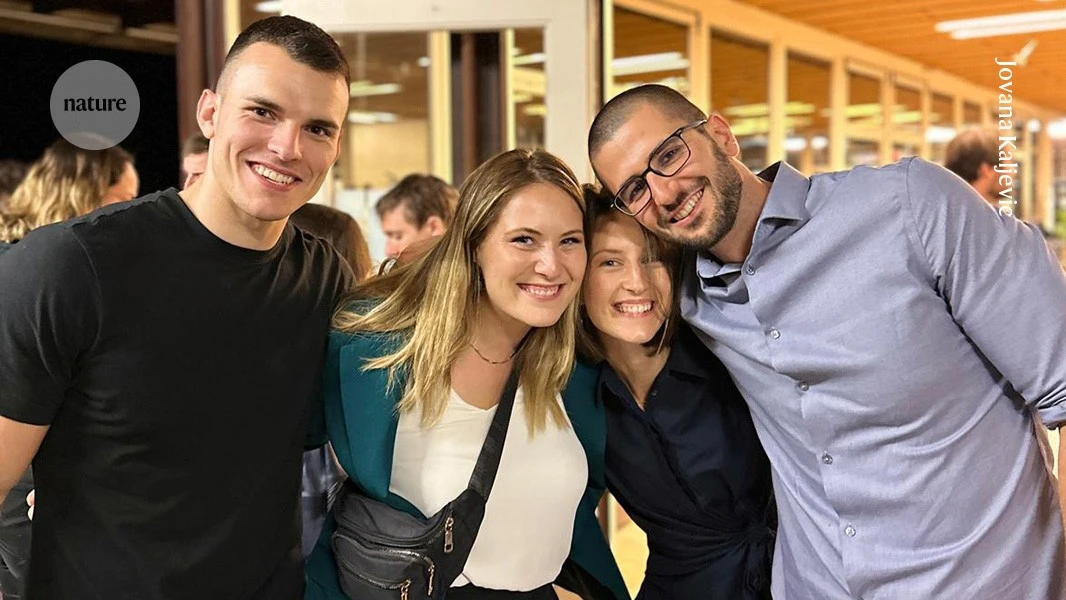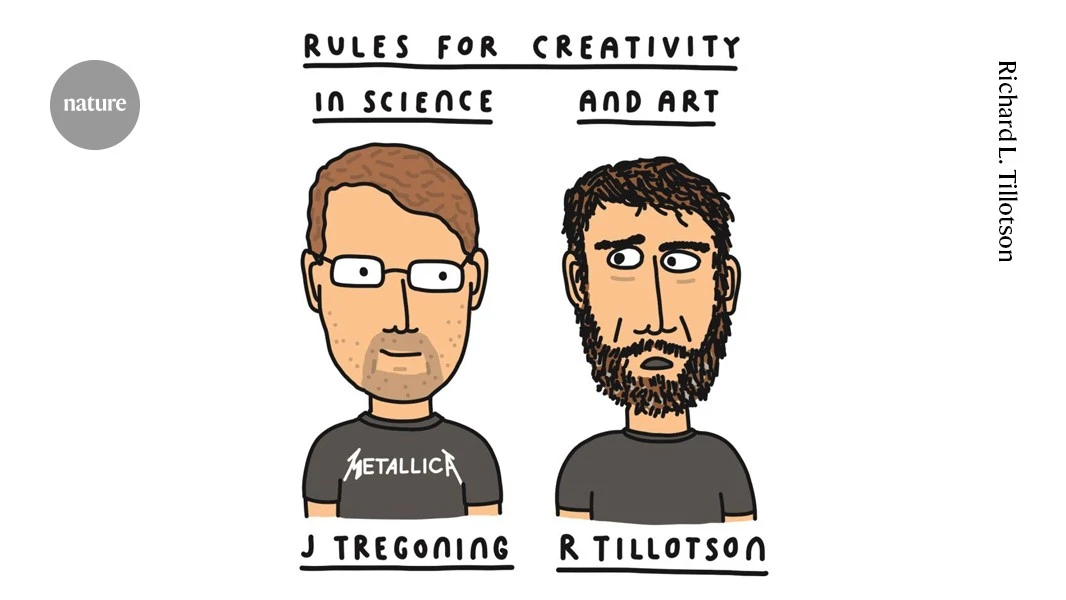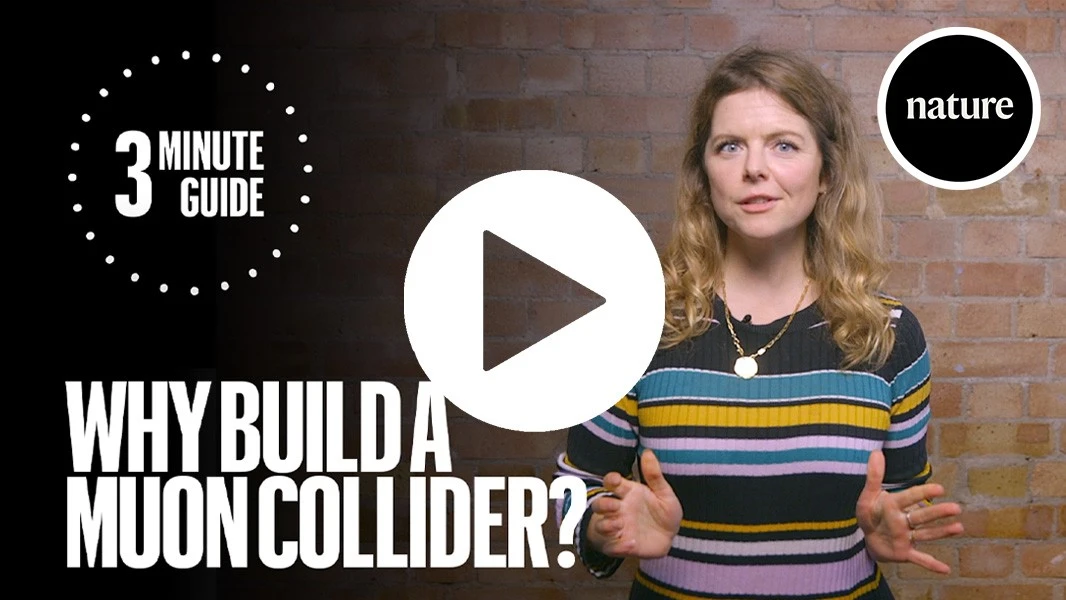
-
Durable all inorganic perovskite tandem photovoltaics
www.nature.com Durable all inorganic perovskite tandem photovoltaics | NatureAll-inorganic perovskites prepared by substituting the organic cations (e.g. methylammonium (MA+) and formamidinium (FA+)) with inorganic cations (e.g. Cs+) are effective concepts to enhance the long-term photo- and thermal-stability of perovskite solar cells (PSCs)1,2. Hence, inorganic perovskite t...
- www.nature.com Raising a glass to the Four Friends Doing Science journal club
Four researchers who left Serbia to pursue their careers rely on this group to keep in touch and to navigate life in science.

- www.nature.com ‘That’s funny’: creative solutions for time-starved researchers
An immunologist and his illustrator friend reveal tips and tricks to help scientists to reach peak performance and creativity.

- www.nature.com Humble scientists earn more trust
Study participants rated fictional scientists who admitted their own knowledge gaps as more credible.

- www.nature.com Why build a muon collider: a three minute guide
Colliding muons could lead to new discoveries – and for a fraction of the cost of facilities like the Large Hadron Collider

-
Digestive contents and food webs record the advent of dinosaur supremacy
www.nature.com Digestive contents and food webs record the advent of dinosaur supremacy | NatureThe early radiation of dinosaurs remains a complex and poorly understood evolutionary event1–4. Here we use hundreds of fossils with direct evidence of feeding to compare trophic dynamics across five vertebrate assemblages that record this event in the Triassic–Jurassic succession of the Polish Basi...

-
Soil microbiomes show consistent and predictable responses to extreme events
www.nature.com Soil microbiomes show consistent and predictable responses to extreme events | NatureIncreasing extreme climatic events threaten the functioning of terrestrial ecosystems1,2. Because soil microbes govern key biogeochemical processes, understanding their response to climate extremes is crucial in predicting the consequences for ecosystem functioning3,4. Here we subjected soils from 3...

-
Study design features increase replicability in brain-wide association studies
www.nature.com Study design features increase replicability in brain-wide association studies | NatureBrain-wide association studies (BWAS) are a fundamental tool in discovering brain–behaviour associations1,2. Several recent studies have shown that thousands of study participants are required for good replicability of BWAS1–3. Here we performed analyses and meta-analyses of a robust effect size ind...

-
Multiple mechanisms for licensing human replication origins
www.nature.com Multiple mechanisms for licensing human replication origins | NatureLoading of replicative helicases is obligatory for the assembly of DNA replication machineries. The eukaryotic MCM2–7 replicative helicase motor is deposited onto DNA by the origin recognition complex (ORC) and co-loader proteins as a head-to-head double hexamer to license replication origins. Altho...

-
MCM double hexamer loading visualized with human proteins
www.nature.com MCM double hexamer loading visualized with human proteins | NatureEukaryotic DNA replication begins with the loading of the MCM replicative DNA helicase as a head-to-head double hexamer at origins of DNA replication1–3. Our current understanding of how the double hexamer is assembled by the origin recognition complex (ORC), CDC6 and CDT1 comes mostly from budding ...

-
Direct visualization of relativistic quantum scars in graphene quantum dots
www.nature.com Direct visualization of relativistic quantum scars in graphene quantum dots | NatureQuantum scars refer to eigenstates with enhanced probability density along unstable classical periodic orbits. First predicted 40 years ago1, scars are special eigenstates that counterintuitively defy ergodicity in quantum systems whose classical counterpart is chaotic2,3. Despite the importance and...

-
Gut microbiota strain richness is species specific and affects engraftment
www.nature.com Gut microbiota strain richness is species specific and affects engraftment | NatureDespite the fundamental role of bacterial strain variation in gut microbiota function1–6, the number of unique strains of a species that can stably colonize the human intestine is still unknown for almost all species. Here we determine the strain richness (SR) of common gut species using thousands o...

-
Early versus deferred use of CDK4/6 inhibitors in advanced breast cancer
www.nature.com Early versus deferred use of CDK4/6 inhibitors in advanced breast cancer | NatureCyclin-dependent kinase 4 and 6 inhibitors (CDK4/6i) in combination with endocrine therapy improve the outcomes of patients with hormone-receptor (HR)-positive, HER2-negative advanced breast cancer and can be used early as first-line treatment or deferred to second-line treatment1–7. Randomized data...

-
Why ‘open’ AI systems are actually closed, and why this matters
www.nature.com Why ‘open’ AI systems are actually closed, and why this matters | NatureThis paper examines ‘open’ artificial intelligence (AI). Claims about ‘open’ AI often lack precision, frequently eliding scrutiny of substantial industry concentration in large-scale AI development and deployment, and often incorrectly applying understandings of ‘open’ imported from free and open-so...
-
Organ-specific sympathetic innervation defines visceral functions
www.nature.com Organ-specific sympathetic innervation defines visceral functions | NatureThe autonomic nervous system orchestrates the functions of the brain and body through the sympathetic and parasympathetic pathways1. However, our understanding of the autonomic system, especially the sympathetic system, at the cellular and molecular levels is severely limited. Here we show topo...

-
Stereochemistry in the disorder–order continuum of protein interactions
www.nature.com Stereochemistry in the disorder–order continuum of protein interactions | NatureIntrinsically disordered proteins can bind via the formation of highly disordered protein complexes without the formation of three-dimensional structure1. Most naturally occurring proteins are levorotatory (l)—that is, made up only of l-amino acids—imprinting molecular structure and communication wi...


